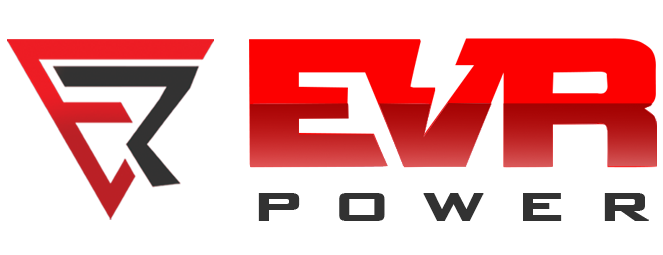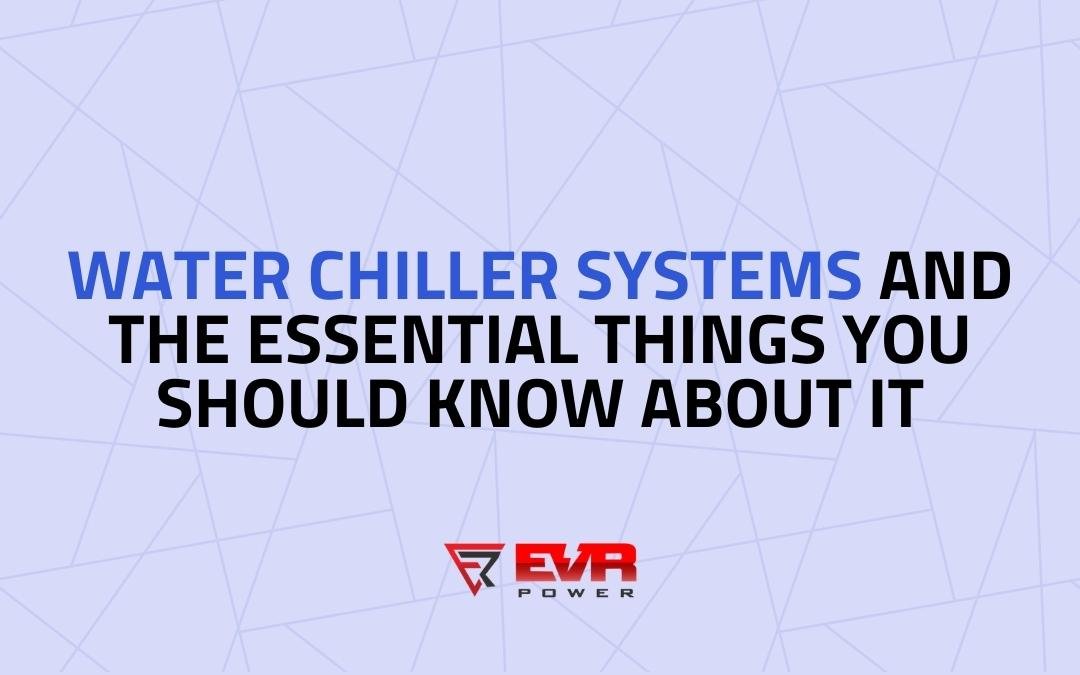Every invention comes with a con, and the technology and engineering work to overcome that challenge to create a perfect solution for industries. And that is the reason why every complex machinery uses chillers. When the machines work so well, the obstacle that hinders their functioning is heating. This is where Chillers come to the rescue.
What is the Significance of Chillers? Why use a Chiller?
Any industrial process generates heat as its byproduct. With heat being generated, no process or machine can be 100% efficient. If this heat is not removed, it worsens the situation causing reduced production, the shutdown of equipment, and even premature equipment failure. So it is vital to incorporate some sort of process that removes the heat in the system. That is where a chiller comes into the picture. A chiller provides multiple benefits by providing cooling. It provides the optimum temperature and pressure to the industrial process.
EVR Power has a wide range of chillers that varies in size and design to suit different applications. We have small and portable chillers for small applications and large central chillers designed to provide cooling for the entire process.
Working of Chiller
Chillers are a key element in all HVAC systems across commercial and industrial applications. Its job is to remove the heat from the system and maintain the optimum temperature of the electrical appliance. In general, Chillers transfer the heat from an internal environment to an external one with a help of a heat transfer device and a refrigerant.
Chiller systems pump coolant or refrigerant through a specific process resulting in heat extraction from relevant areas in the system. Other main components of a chiller are a compressor, a condenser, an evaporator, and an expansion valve. The evaporator in a chiller functions as a heat exchanger and transfers the heat captured to the refrigerant. During the heat transfer, the refrigerant evaporates thereby reducing the process temperature. The compressor, on the other hand, removes the refrigerant from the evaporator and ensures constant pressure for heat absorption at an appropriate rate. Finally, the condenser converts the refrigerant back to a liquid state.
In a chiller unit, there are two heat exchangers involved – The evaporator and the cooling coil. In addition to the evaporation process, the evaporator also acts as a heat exchanger. It contains the primary refrigerant on one side while the other side has the secondary refrigerant or water.
The cooling coil is another heat exchanger which transfers heat from air or other process fluid to chilled water. The cooling water entering the coil is referred to as the chilled water supply while that leaving is called the chilled water return. For most chiller units, the heat exchange process produces a temperature difference between the chilled water supply and return which is approximately 8 to 16°F (4 to 9°C). This temperature difference is known as the cooling range. By determining this temperature range and the cooling load, the required chilled water flow rate can be estimated.
Vapour Absorption Vs. Vapor Compression Chillers
Chillers are broadly classified into two types – Vapor absorption and Vapor compression chillers. The way in which the heat is removed from the system differs in both of these types. Vapour compression chillers use a mechanical compressor driven by electricity to pump the refrigerant around the system whereas the vapour absorption ones use heat for this purpose.
Of the two, Vapor Compression chillers are the most commonly used type of water chiller.
Air Cooled Chillers Vs. Water-cooled chillers
Based on the condenser type used in a chiller unit, they are categorized into Air-cooled and Water-cooled Chillers.
How does an Air-Cooled Chiller work?
An Air-cooled chiller forces air into the refrigerant lines with the help of a blower. They follow the same principle as the Car radiators. Air-cooled chillers require an ambient temperature of 95°F or 35°C or below to work effectively.
Air-cooled chillers have the advantage of lower installation costs. The maintenance of an air-cooled chiller is also simple as compared to a water-cooled chiller. Air-cooled chillers occupy less space, but will mostly reside outside a facility. Thus, the external environmental elements will compromise their functional lifespan.
How does a Water-cooled chiller Work?
Water chillers, on the other hand, use a water-cooled condenser connected to a cooling tower. Firstly, It transfers the refrigerant heat from the evaporator to condenser water and then discharges the heat from the condenser water to the cooling tower.
Water chillers are used in industries where a cooling water supply is readily available.
A chiller recirculates the cooling water instead of wasting it through a single-pass system. This recirculation minimizes the cost of water consumption which is both economic and environment friendly.
For larger installations, Water chillers are preferred as they can provide a more constant performance for commercial and industrial air conditioning compared to air-cooled chillers because of the relatively lesser fluctuations of the ambient temperature. They are mostly installed inside the buildings and are protected from environmental factors. Water chillers offer a longer lifespan compared to air chillers.
Industrial water chillers are used in a variety of applications including moulding, tool and die-cutting, food processing and beverage industry, chemicals, lasers, etc.
Water Chillers buying and maintenance
There are certain factors to keep in mind while installing a water chiller for an HVAC application. In addition to the load calculation, the controls, configuration, and piping also must be considered while specifying the design requirements to your manufacturer. Other factors include,
Cooling load and Capacity
The rate at which heat is extracted from the system to keep a required temperature for the process is called the cooling load. It is usually represented in tons of refrigeration (TOR) or BTU per hour. Once the cooling load is calculated, the cooling capacity can be established. It refers to the rate of cooling, one chiller unit can provide. Generally, it is a little higher than the cooling load.
Water supply and Flow rate
The amount of water supply required to a chiller unit and the flow rate at which it has to be supplied also must be considered. Since the cooling coil exchanges heat between the chilled water and air, cooling coil specifications must also be included while calculating the cooling capacity.
To get the most out of your Water Chillers, there are certain things you should do. These will not only significantly improve your chiller efficiency but also reduce your operation costs.
- Routine inspection on the condenser coils for clogging and corrosion
- Refilling the refrigerant at frequent intervals as the cooling capacity greatly depends on the refrigerant.
- Ensure proper water flow to the cooling tower. Any contaminants like sand or debris can impact the condenser efficiency.
- Proper Safety controls that prevent harmful variations in the compressor pressure.
- Preventive measures to be taken to avoid inflow of air and moisture into the chiller systems
Conclusion
It is necessary to incorporate a Water Chiller in your industry machinery irrespective of your business. Chillers save your equipment from heat and ensure the long-lasting working of the machines.
EVR Power, the best manufacturer and supplier of water chillers in Chennai and India, has a team of experts to build quality products that reduce the maintenance costs of the customers drastically. Get in touch with us today! Also, feel free to comment your thoughts on water chillers.


0 Comments